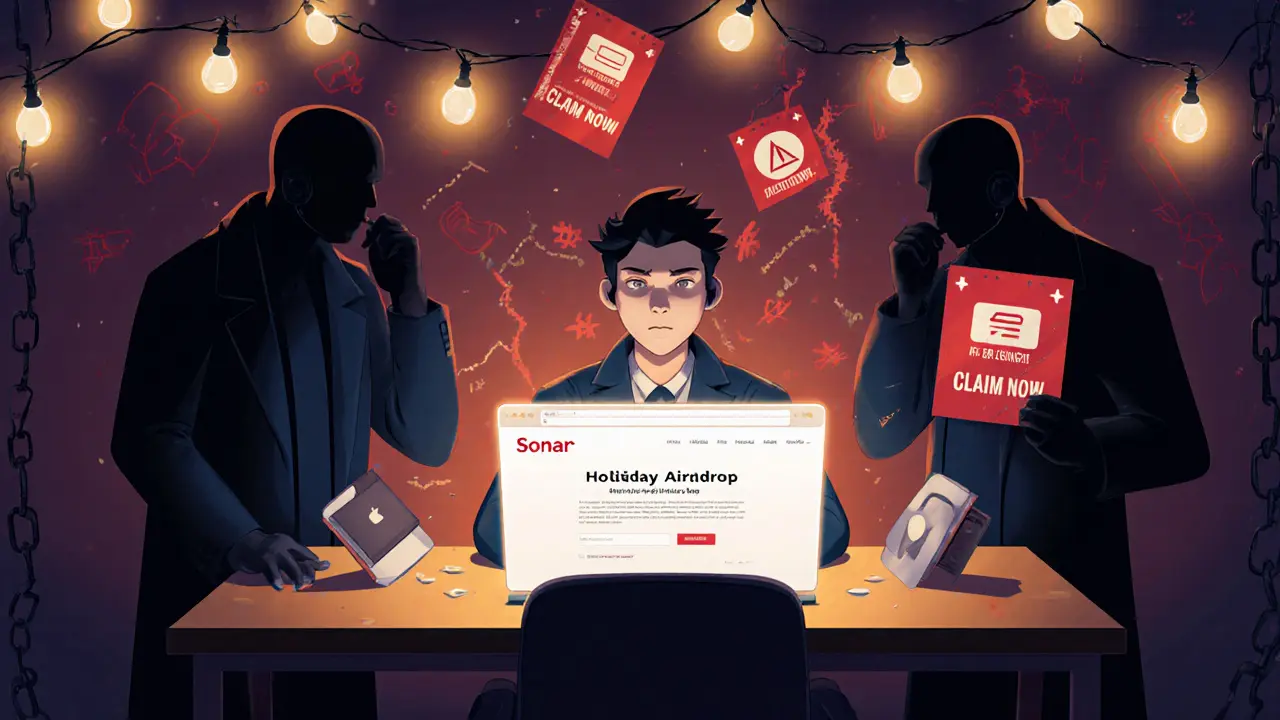Fake Airdrop Warning: How to Spot and Avoid Crypto Scams
When you hear about a free fake airdrop warning, a red flag alerting users to fraudulent cryptocurrency giveaways, it’s not just noise—it’s a survival signal. Millions have lost money to fake airdrops that look real but are built to steal your private keys, drain your wallet, or trick you into paying fees for tokens that don’t exist. These scams don’t come with warning labels. They show up as polished websites, fake Twitter accounts, and YouTube videos that mimic real projects. The goal? Make you act before you think.
Most crypto scam, a deceptive scheme designed to steal crypto assets or personal information follows the same playbook: they promise free tokens from big names like Solana, Ethereum, or Binance. But if the project has no official website, no team, no roadmap, and no social media history before the airdrop announcement, it’s fake. Real airdrops don’t ask you to connect your wallet first. They don’t ask for your seed phrase. They don’t send you a link to claim tokens through a random contract. If you’re being told to sign a transaction to "claim" your free tokens, you’re already in danger. That signature gives the scammer full control over your wallet.
airdrop scam, a fraudulent distribution of non-existent tokens designed to trick users into revealing wallet access thrives on excitement and FOMO. People see "free money" and skip the basics: checking the project’s official channels, verifying the contract address, looking for community consensus. You won’t find a real airdrop on a Telegram group with 50,000 members and no verified admin. You won’t find it on a site with broken English and a .xyz domain. Real projects like SundaeSwap or Moonpot (when they actually run one) announce airdrops through their official blogs and Twitter accounts—with clear instructions and no wallet connection until after verification.
And it’s not just about losing tokens. These scams often lead to fake crypto airdrop, a counterfeit token distribution that mimics legitimate projects to deceive users phishing pages that install malware or harvest your login details. Some even clone real exchange interfaces—like FutureX Pro or QB crypto exchange—to make you believe you’re on a trusted platform. Once you enter your details, they’re gone. No recovery. No refund.
The good news? You don’t need to be a tech expert to avoid these traps. Just follow three rules: never connect your wallet unless you’re 100% sure, never pay anything to claim free tokens, and always double-check the source. If a project’s website looks rushed, has typos, or has no GitHub activity, walk away. If the airdrop is "limited time only" and pushes urgency, it’s a trap. Real airdrops wait. They announce. They verify. They don’t beg you to act now.
Below, you’ll find real cases of fake airdrops—PlayerMon PYM, Moonpot POTS, 1MillionNFTs 1MIL—and what made them scams. You’ll also see how dead coins like EDRCoin and Rivetz are used as decoys in phishing campaigns. These aren’t hypotheticals. They’re documented losses. Learn from them. Stay sharp. Your wallet depends on it.

Sonar Holiday Airdrop: What We Know (And Why It Might Be a Scam)
No such thing as a Sonar Holiday airdrop-it's a scam. Learn how fake crypto airdrops work, how to spot them, and what real Solana airdrops to watch in 2025.
© 2025. All rights reserved.